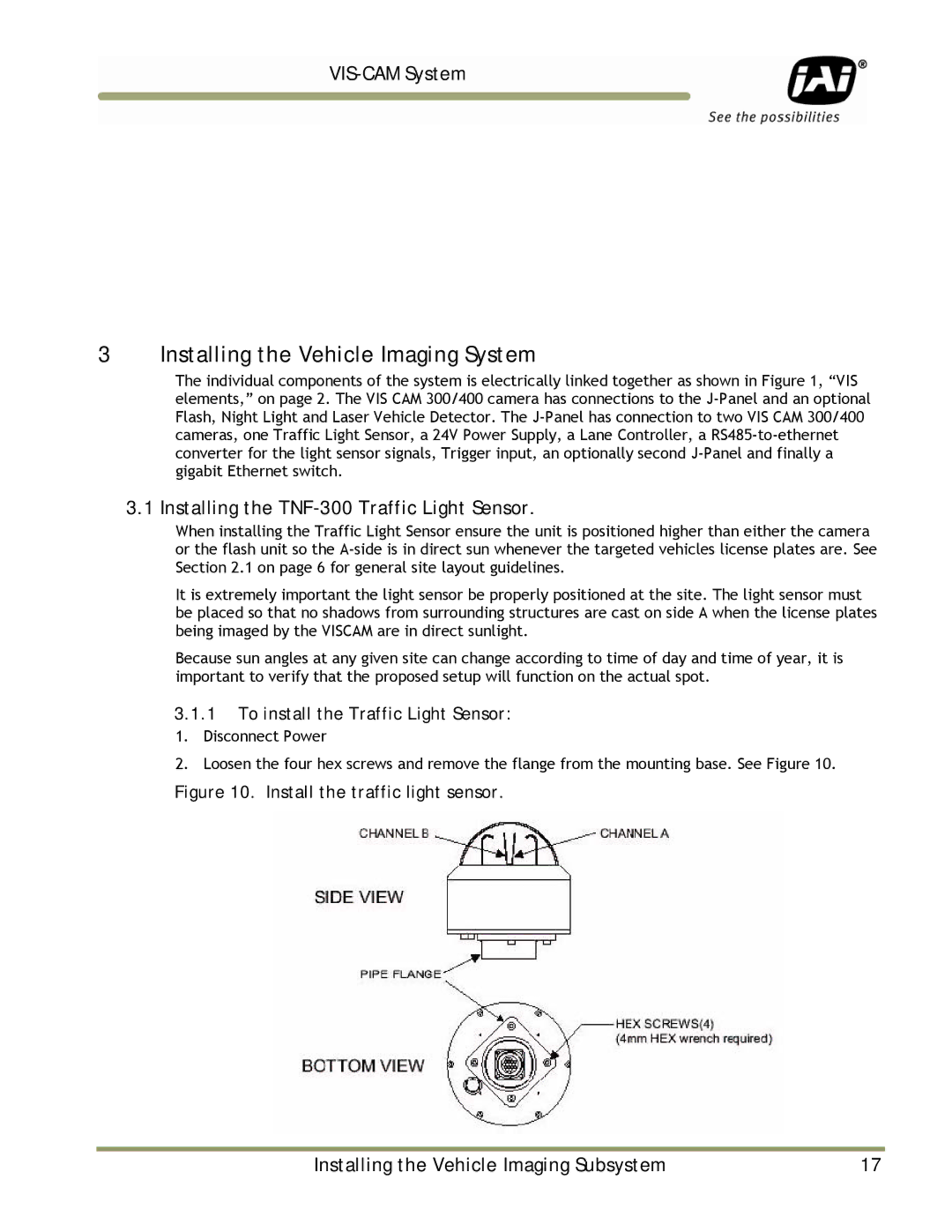
VIS-CAM System
3 Installing the Vehicle Imaging System
The individual components of the system is electrically linked together as shown in Figure 1, “VIS elements,” on page 2. The VIS CAM 300/400 camera has connections to the
3.1 Installing the TNF-300 Traffic Light Sensor.
When installing the Traffic Light Sensor ensure the unit is positioned higher than either the camera or the flash unit so the
It is extremely important the light sensor be properly positioned at the site. The light sensor must be placed so that no shadows from surrounding structures are cast on side A when the license plates being imaged by the VISCAM are in direct sunlight.
Because sun angles at any given site can change according to time of day and time of year, it is important to verify that the proposed setup will function on the actual spot.
3.1.1To install the Traffic Light Sensor:
1.Disconnect Power
2.Loosen the four hex screws and remove the flange from the mounting base. See Figure 10.
Figure 10. Install the traffic light sensor.
Installing the Vehicle Imaging Subsystem | 17 |
